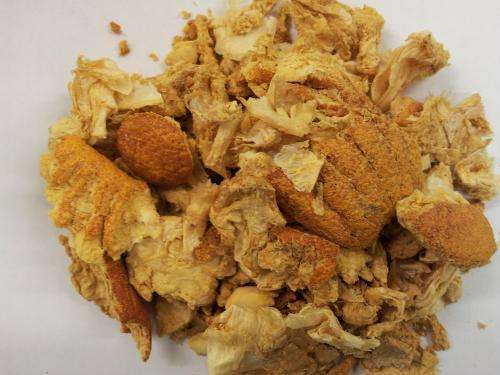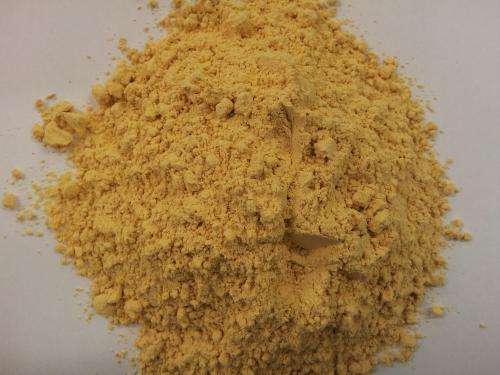Orange flour for gluten-free bread

During the processing of fruit and vegetables one third is discarded as 'waste'. The waste or by-product can be described as the core, pips and peel of the fruit or vegetable. This waste can be costly for the manufacturer to dispose of and it may also have hazardous effects on the environment.
Research has shown that a high quantity of nutrients such as dietary fibre and bio-actives are present in these by-products, thus the full potential of the fruit or vegetable is not fulfilled. For example, orange pomace, a by-product from the smoothie and juice industry, has proven to have good nutritional attributes; it is low in fat (2% dry matter) and high in dietary fibre (40% dry matter) and has the potential to be used as a food ingredient.
Researchers at Teagasc Food Research Centre and University College Cork have been looking in to possible uses for this discard, for example, the use of orange flour in gluten-free bread formulations.

Presently in Ireland, approximately one in a hundred people suffer from coeliac disease. Coeliac disease can be explained as an autoimmune reaction to the prolamin fraction of the gluten protein, which causes damage to the villi in the small intestine. The only treatment for coeliac disease is lifelong avoidance of foods containing wheat, barley, spelt, rye and some oats. Many gluten-free products available on the market are calorie dense, lacking in flavour, mouthfeel and nutrients, and are costly to buy.
Gluten-free formulations
Dr Eimear Gallagher, Teagasc Food Research Centre, explains: "Developing gluten-free formulations can be challenging for the cereal technologist, as the structure-building protein (i.e., gluten) is absent. In the present study, a response surface design was created to statistically calculate the optimal level of orange pomace addition, water addition and ideal proofing time to produce an optimal bread formulation. This study investigated the effects of these three factors in different combinations on bread parameters such as loaf volume, crumb structure, crumb colour, texture, microstructure, nutritional and sensory properties and the optimised samples were assessed using sensory panellists.
"Sensory panellists scored the bread favourably with respect to appearance, flavour, texture and overall acceptability," says Norah O'Shea, a PhD student of Dr Gallagher.
"The inclusion of orange pomace as a novel structure-building and nutritious ingredient in a gluten-free formulation was illustrated in this study. Using response surface methodology as a tool, successfully created bread with favourable baking characteristics and enhanced dietary fibre. Orange pomace proved to be a viable, low cost food by-product for improving the physical and nutritional characteristics of gluten-free breads," explains Dr Gallagher.
"The addition of this ingredient is not limited to gluten-free bread; it has potential to be used in both gluten-containing and gluten-free breads and confectionary," adds Dr Gallagher.
More information: O'Shea, N. et al. (2012). Dietary fibre and phytochemical characteristics of fruit & vegetable by-products & their recent applications as novel ingredients in food products. Innovative Food Science and Emerging Technologies, 16: 1-10.
Provided by Teagasc


















